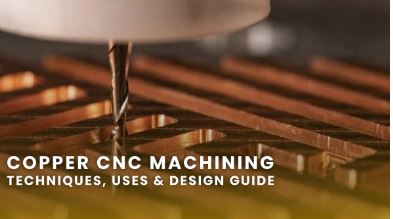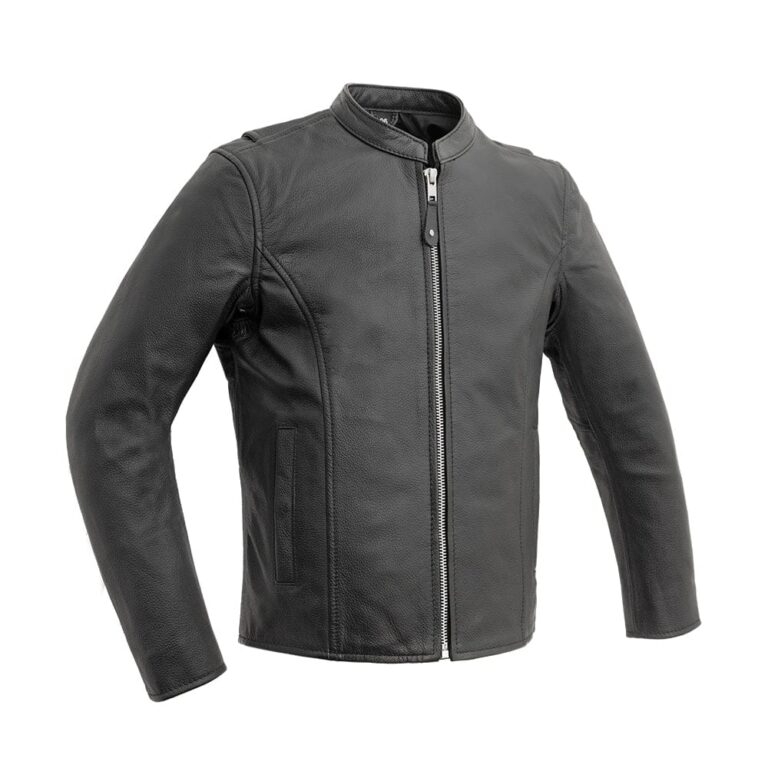Copper CNC Machining: Techniques, Uses & Design Guide
Copper is an extremely useful and historically recognized metal used in engineering applications, due to its high conductivity and corrosion resistance. Copper CNC machining is used by engineers to create accurate parts since it requires less time to manufacture. Moreover, copper features good thermal and electrical characteristics making it a peculiar alloy in all sectors.
In this guide, you will find facts about copper CNC machining, from the grades of copper to its use cases. In addition, we will figure out possible problems that may happen while machining copper. So, the knowledge of these factors is crucial to efficient copper parts manufacturing projects.
CNC Machining Made Easier To Turn Copper Into Valuable Products
Copper Machined Parts
Copper CNC Machining employs numerical control to machine, trim, and shape copper materials in the right manner. It utilizes mills, grinders, and lathes to produce further features on parts made from copper. Copper represented by the symbol Cu and atomic number 29 stands second to silver in heat and electrical conductivity. Moreover, it’s anti-microbial and rust-resistant and thus can be exploited in aerospace, automotive, power, and medical industries. More than 99% of the copper used in commerce is pure copper with small proportions of silver, lead, or even oxygen.
In the past, copper flexibility and toughness made it challenging to put through a machining process. Now, CNC machining automates the process of copper parts production and provides high precision in manufacturing complex copper parts.
Which Copper Grades Can CNC Machined Effectively?
Copper grades are different in characteristics and usage, so they are suitable for definite CNC machining operations. Selecting the right grade affects the working efficiency and life span of the end-user products. Here’s an overview of the main copper grades and their properties:
Pure Copper
Pure copper is electrolytic tough-pitch copper. It usually exhibits high ductility and softness. So, it makes it ideal for use in applications that require high heat and electric conductivity. It can be made harder or stronger by the inclusion of small traces of other metals without loss of electrical conductivity. Several pure copper grades have low impurities of less than 1%. So, they are typically used in electrical applications such as wires, motors as well as heat exchangers.
Electrolytic Copper
Electrolytic copper is also highly pure, usually being at least 99.95% Cu using an electrolysis process. The intended grade gives the highest conductivity with the least amount of metallic contamination and conforms to the International Annealed Copper Standard (IACS) for electrical use. Most often applied to busbars, windings, and high-efficiency cables.
Oxygen-Free Copper
Oxygen-free copper is produced by a low percentage of oxygen that would cause copper oxidation. These grades are used for electronic parts and components used in high vacuum systems where impurities can cause hardware failure.
C10100 (OFE) and C10200 (OF) are the two primary grades that retain 100% IACS conductivity. These grades are produced from high-purity cathode copper and are melted in a protected manner to minimize oxidation.
Free-Machining Copper
Free-machining copper is produced by contaminating zinc, nickel, phosphorus, and tin into copper. This copper alloy is used where accuracy and mass production parts are needed.
Copper zinc alloy known as brass; typically features corrosion resistance and good machinability. Its uses are common in gear and fasteners. Copper-tin alloy, bronze, suitable for hard-wearing components such as bushing, bearings, and hydraulic parts due to its high strength and hardness.
Benefits and Drawbacks of CNC Copper Parts
CNC copper parts offer various benefits and drawbacks depending on their specific applications. Understanding these aspects is important for selecting the right material for your machining projects.
| Parameter | Benefits | Drawbacks |
| Machinability | High machinability with optimal cutting speeds (up to 60 m/min). | Tool wear can increase due to pure copper’s softness. |
| Thermal Conductivity | Thermal conductivity of about 390 W/m·K, enhancing heat dissipation. | Limited thermal resistance in extreme temperatures. |
| Electrical Conductivity | Electrical conductivity of 58 MS/m, ideal for high-performance components. | Alloying can reduce conductivity by up to 20%. |
| Corrosion Resistance | Excellent resistance to oxidation and corrosion in non-reactive environments. | Some grades, like C11000, are less resistant to acids. |
| Formability | Good formability at temperatures above 500°C, aiding in shaping. | Cold working may lead to strain hardening. |
| Surface Finish | Can achieve finishes up to 0.1 µm for high aesthetic standards. | Certain finishes may require additional processing. |
Factors to Consider in CNC Copper Machining
CNC copper parts are in high demand. So, they require careful consideration while designing. Even though machining copper parts through CNC is a highly reliable way. However, several technical issues need to be addressed. Here are the key elements to evaluate:
Choosing the Right Copper Material Grade
The right grade of copper must be chosen depending on the expected requirement of an application. Unfortunately, pure copper is expensive and sometimes cannot be employed for mechanical parts of equipment. Free-machining copper is relatively highly available. For instance; copper C36000, usually permits high machinability as high as 100%. So, it’s primarily more economical. Identify the necessary properties, such as tensile strength and conductivity, for your copper parts based on their application.
Design for Manufacturability (DFM)
Copper cannot be machined well if there are design flaws as mentioned below. The following requirements must be met for optimal outcomes. It’s recommended to have a wall thickness of nearly about 0.5mm attractive design with strong mechanical properties. Moreover, it’s advisable to include the reduction of part setups, dimension checks, and elimination of deep pockets with small radii below 2mm to increase efficiency. All specifications help to improve the function, as well as the manufacturing of the final parts.
Setting the Optimal Feed Rate
The feed rate significantly affects the quality and durability of produced copper parts. A typical feed rate for copper normally lies between 0.01- 0.05 Inches per revolution. Generally, it depends on the tool diameter and application type. Careful determination of feed rate is crucial for the successful attainment of the required surface finishes and tolerances. Because of the high thermal conductivity of copper approximately (390 W/m·K) a high feed rate should be avoided to minimize tool wear and thermal deformation.
Different CNC Machining Methods for Copper
Copper is a versatile material that demands specific machinability techniques to achieve the right machining standards. The following are the major CNC machining techniques applicable to copper.
CNC Copper Milling
CNC Copper Milling
Copper milling uses cutter tools directed by computer-controlled programs to tear out material from the copper workpiece. This method employs multi-point tools in different directions hence creating complex patterns. The 2-flute carbide end mill is used most frequently because it’s useful for cutting copper alloys. This technique is particularly appropriate for making features such as grooves, notches, and shapes of different layers.
CNC Turning for Copper Parts
CNC Copper Turning
Copper turning holds the copper workpiece firmly while cutting tools are stationary. As the workpiece revolves at a given speed rate of tools in the machine gradually build the workpiece to the required specifications. This approach is economically perfect for manufacturing small and dimensionally accurate copper parts. Some common uses include valves and connectors, where close tolerances are crucial.
Applications of CNC Machined Copper Parts
Copper parts are normally used in sensitive applications. Typical uses include:
- Connectors
- Gas welding nozzles
- Radiators
- Heat exchangers
- Bearings and gears
Surface Finishing for Copper CNC Machined Parts
Copper CNC machined components require surface finishing treatments for performance and functional improvements. Below are a few common techniques used for finishing copper parts:
- Media Blasting: Media blasting ideal covers up machining defects on copper by using high-velocity abrasive grains. The method yields a flat surface appearance that not only increases the sturdiness but also hides imperfections.
- Electroplating: The electroplating process applies a thin layer of metal on the surface of another metal, mainly copper to avoid the oxide formation. This process not only increases the life cycle of the parts but also retains their electrical and thermal characteristics.
- Electropolishing: Electropolishing takes off a fine layer of material from the copper surface. The layer thickness amount varies between 0.00254 mm to 0.0635 mm. This technique provides a better surface and improves resistance to corrosion, and reflectiveness.
Summary
In summary, copper CNC machining plays an indispensable role in fulfilling modern industrial needs. Because, it features high conductivity, usability, and easy machinability. However, new technology in machining improves its uses and effectiveness. CNC Machining Service provides a range of treatments and surface finishes to meet the specific needs of each project. Mainly, they focus on making corrosion-resistant copper parts. This includes working with solid copper bars and copper-nickel alloys. They also perform CNC turning and milling on various copper alloy materials.






